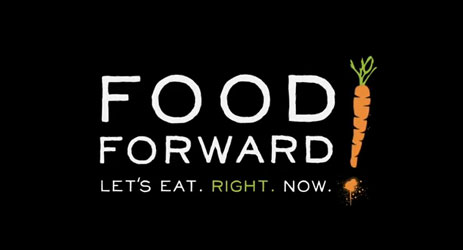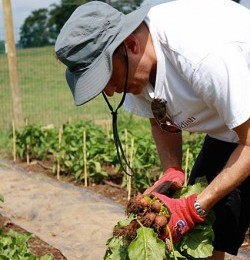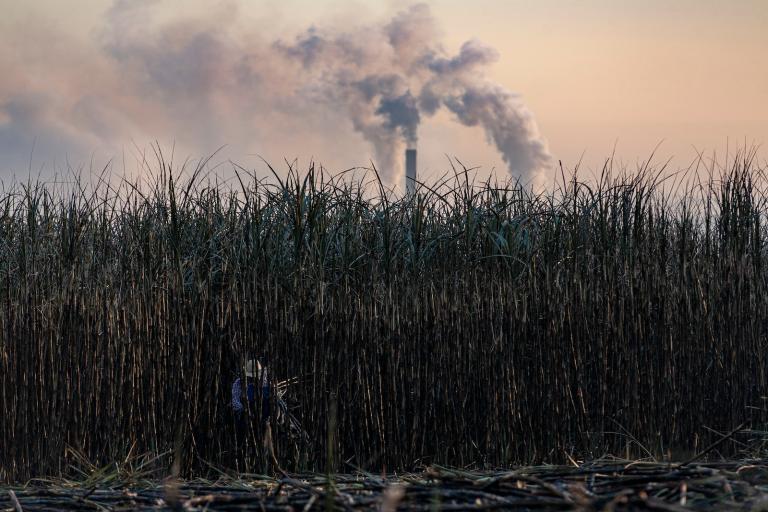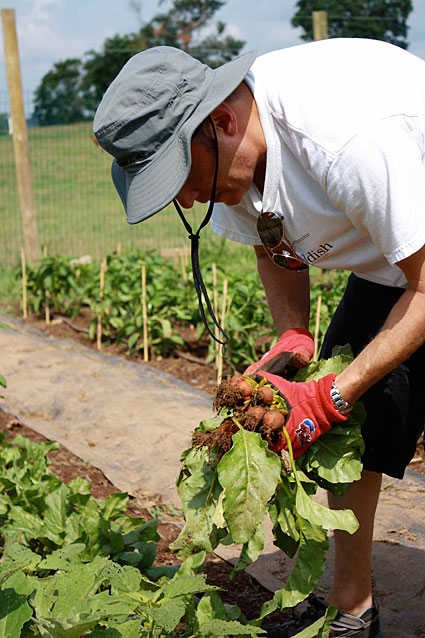 Chef Mitch Prensky harvests his beets.(Julie Lynch)A recent article in the New York Times documented the growing competition among New York chefs for the highest-quality food from local farms — whether it’s heirloom cabbages or pastured poussins. Opining that “top chefs can’t be lip-service locavores any longer,” writer Glenn Collins offers this mini-food fight as evidence of a “farm-to-table revolution” among restaurateurs.
Chef Mitch Prensky harvests his beets.(Julie Lynch)A recent article in the New York Times documented the growing competition among New York chefs for the highest-quality food from local farms — whether it’s heirloom cabbages or pastured poussins. Opining that “top chefs can’t be lip-service locavores any longer,” writer Glenn Collins offers this mini-food fight as evidence of a “farm-to-table revolution” among restaurateurs.
These chefs’ approach fits nicely into the haute cuisine concept that the chef’s job is to hunt down the absolutely perfect ingredient. The fact that more chefs are looking in their relative backyards may somewhat be a testament to the fact that globalization of the food chain has reduced the variety and diversity of food. It used to be that chefs would explore the farthest reaches of the globe for the obscure and the delicious. But now, the obscure and delicious is more likely to be grown in a peri-urban farm than on a tropical plantation.
I recently spent a morning with a Philadelphia chef who takes the concept of farm-to-table a step further. Mitch Prensky has contracted with nearby Blue Elephant Farm to produce exclusively for his well-regarded restaurant Supper under his direction. In turn, Prensky will limit the fruit and vegetables he uses to the output from Blue Elephant — pickling what he doesn’t serve fresh to his customers. He fully intends to continue cooking from the farm all through winter — Philly has an almost perfect climate for year-round hoophouse growing. What he can’t get from Blue Elephant, he gets from other local providers — including beer, which in Philadelphia results in a fabulous selection of microbrews. The seafood he serves, while not local, is sustainable — a lamentable rarity in high-end restaurants.
A graduate of New York City’s French Culinary Institute who’s cooked at New York’s famed Lutece and Provence restaurants (and an early stint as kitchen assistant for Jacques Pepin), Prensky hasn’t gone locavore to make a political point. As he likes to say, “I’m just here to make you dinner.” Working with a single farm has enabled him to achieve something that all chefs desire: total control. And he’s not stopping with fruit and vegetables. He’s working with the farm to add meat and poultry (Prensky makes his own charcuterie), and ultimately expects to produce cheese and other value-added products off the farm. He even is toying with the idea of his own CSA for a few select customers; included in the box might be his own pickles or other “homemade” products.
Some may wonder about the benefit to the farmer from this arrangement. Luckily for Prensky, Blue Elephant is not your typical farm. Organic in spirit if not certification, it’s in some ways a hobby farm, owned by a wealthy couple who keep a low profile — Prensky wouldn’t tell me their names — but Prensky’s ambitious vision may result in this “hobby” becoming a booming business.
This unconventional partnership represents an alternative model for high-end restaurants and small farms. Take a closer look, through this slideshow:
Photos by Julie Lynch

Blue Elephant Farm in Delaware County, Penn.
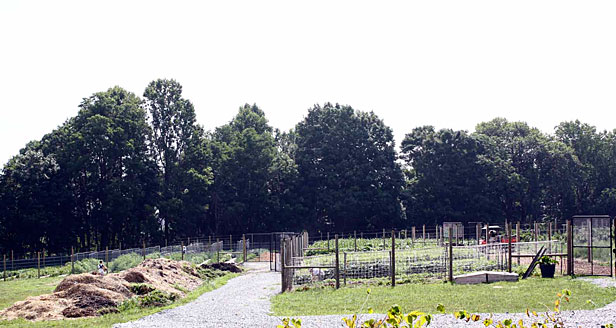
Supper restaurant has one acre of Blue Elephant’s land in production for its exclusive use.
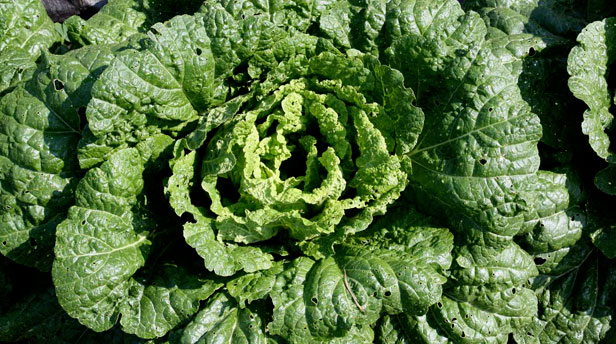 Now that’s a good-looking organically grown cabbage — bug holes and all.
Now that’s a good-looking organically grown cabbage — bug holes and all.
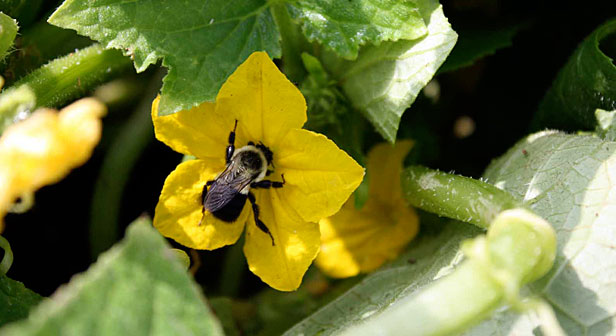 A crucial farmworker helps with the squash.
A crucial farmworker helps with the squash.
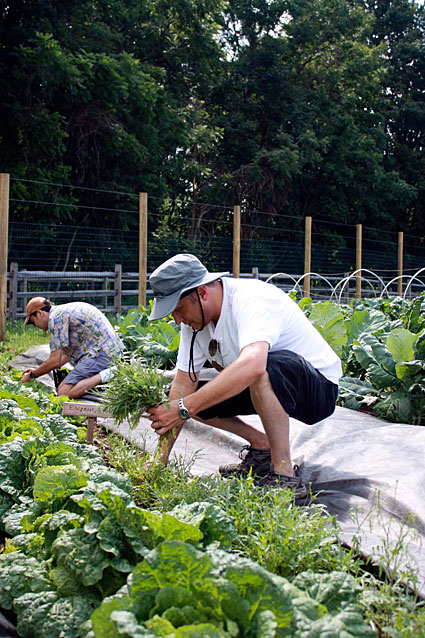 Prensky and Grist’s intrepid reporter pick greens for the night’s salads.
Prensky and Grist’s intrepid reporter pick greens for the night’s salads.
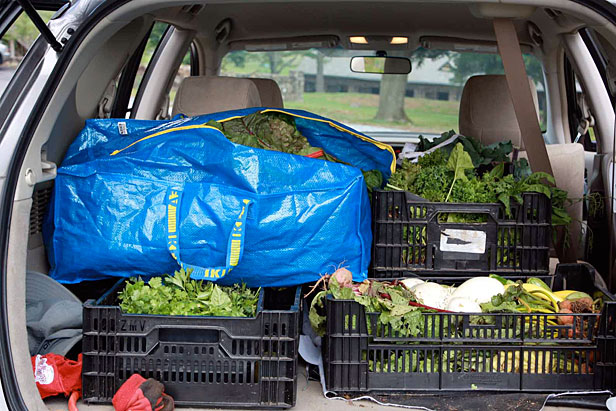 One day’s haul for the restaurant.
One day’s haul for the restaurant.
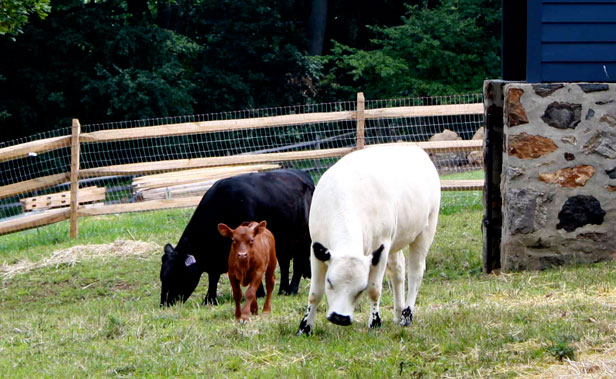 These cows are “breeders” for the next phase of Supper’s farm-to-table plan.
These cows are “breeders” for the next phase of Supper’s farm-to-table plan.
